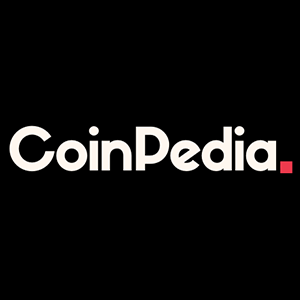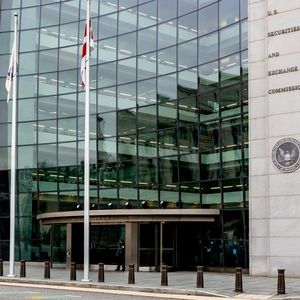Coinbase’s Layer 2 network, Base , intended to spark a cultural wave, but instead ignited controversy and outrage after what many perceived as an official endorsement of a meme coin went awry. It all began with a seemingly innocuous tweet from Base’s official X account: “Base is for everyone.” Coined it: https://t.co/iXmYbZ45xN — Base (@base) April 16, 2025 Shortly after, a follow-up post stating “coined it” included a link to a token minted on Zora, making the post itself tradeable as a coin. What followed was a breathtaking sequence of events that saw the token’s market cap skyrocket to $17.1 million, then crash nearly 94% within minutes. Despite disclaimers that the token was not an official product of Coinbase or Base, the market interpreted the endorsement differently. On-chain sleuths quickly identified red flags: top wallets hoarded nearly half the token’s supply, and within moments of its meteoric rise, the whales dumped their bags, triggering a crash that wiped out millions in value. Over 2,500 wallets were affected by the fallout, many belonging to retail investors who had believed the token had Coinbase’s implicit backing. Hantao Yuan, an on-chain analyst, reported that one wallet alone controlled over 25% of the supply. Let me get this straight > base tweets a token on their main account > Top 3 holders had 47% of the supply (sold a lot) > Jesse defends it > Posts 2 more tokens > "This is culture" > Rugs 2500 holders (potentially new base users) pic.twitter.com/NM4CY04eUa — Hantao (@Hantao) April 16, 2025 While this wasn’t a typical rug pull involving a liquidity pull, the effect was the same. The top three wallets accounted for 47% of the token’s supply, and their collective selloff led to a catastrophic implosion. Volume bots accelerated the damage. From a peak of $17 million, the token plummeted to less than $1 million before rebounding to over $23 million. Base Meme Coin: Public Experiment or Institutional Recklessness? The incident sparked immediate backlash across Crypto Twitter, where influencers and traders accused Base and Jesse Pollak, the project’s lead, of recklessness. Given that Coinbase is a publicly traded U.S. company and Base is a flagship Ethereum Layer 2 network, the perception of legitimacy carried by the Base Twitter account was enormous. Many believed that a Coinbase-backed entity promoting a token implied credibility and safety. But that illusion was shattered in real time. Critics questioned whether a regulated U.S. company could so casually experiment with what appeared to be a meme coin, especially given the potential regulatory consequences. Several users reported that they had invested substantial sums, some even liquidating their retirement savings or taking out loans, believing that the token had the backing of Coinbase. One particularly viral tweet detailed the story of an investor who claimed to have lost everything, prompting calls for intervention from the SEC, Nasdaq, and federal agencies. I put my entire savings, liquidated my 401k and refinanced my home to invest in this project because a publicly traded, U.S. domiciled company supported it. However, it appears that employees at said company ( @coinbase , @base ) were acting maliciously and instead decided to rug… pic.twitter.com/tK3G6WStTB — Bear_Market_Enjoyer_69 (@NFT_Enjoyer_69) April 16, 2025 In a follow-up statement, Base clarified that they received 10 million of the tokens as the original content creator but would not sell them. Base is posting on Zora because we believe everyone should bring their content onchain, and use the tools that make it possible. Memes. Moments. Culture. If we want the future to be onchain, we have to be willing to experiment in public. That’s what we’re doing. To be clear,… — Base (@base) April 16, 2025 The move was described as creative experimentation, not a product launch, but that distinction came too late for many. Alon from Pump.fun, a rival Solana-based launchpad , claimed that while tokenization of content may become standard in the future, the current market context makes such actions dangerously premature. “If you launch a coin AND have social influence, that comes with responsibility,” he warned. The unwritten rules of crypto dictate that influential figures must avoid promoting speculative assets without full transparency, especially when tied to major institutions. I think there’s a reality where what base did is normal in a few years’ time but it DEFINITELY isn’t today and that has resulted in hurt I’m a huge advocate for the vision of “tokenizing everything” but you can’t change current market realities – if you launch a coin AND have… — alon (@a1lon9) April 16, 2025 Fallout, Recovery, and a Cross-Chain Culture War As the token rebounded to around $18 million in market cap, the noise surrounding Base’s experiment only intensified. At one point, trading volume exceeded $30 million in just under 12 hours. Even more baffling, Base earned roughly $70,000 in creator fees from the token it insists it won’t touch. The meme coin, once ridiculed, started attracting attention again as traders speculated on its future. Still, the damage to trust may take far longer to recover. Influencers and developers are demanding more transparency from Coinbase and Base. base just had a major rug pull, here's what went down what happened → official base twitter promoted memecoin "base is for everyone" → immediate speculative frenzy, token pumped rapidly from launch to ~$15-20M market cap → top 3 holders held 47% of supply, quickly dumped… pic.twitter.com/iROD2tKWvX — Abhi (@0xAbhiP) April 16, 2025 As of now, the “Base is for everyone” token has a market cap of $10.4 million, a far cry from its all-time high, but it remains very much alive. Whether that’s a sign of recovery or just another peak before a fall remains to be seen. The post Coinbase Distances Base from Viral Meme Coin After 90% Crash Post $17.1M Surge appeared first on Cryptonews .


















